
The AI Infrastructure Race
What is the future of AI infrastructure, including GPUs, networking, and cloud solutions....
Read more
What is the future of AI infrastructure, including GPUs, networking, and cloud solutions....
Read more
Explore how both in training and in inference, networking is the crucial part to...
Read more
Futuriom presents a snapshot of how AI clouds, GPU clouds, and neoclouds fit together, examining...
Read more
Explore how Ethernet is expanding its reach beyond traditional scale-out and scale-across applications to...
Read more
Explore the three essential approaches to AI infrastructure scaling: scale up, scale out, and...
Read more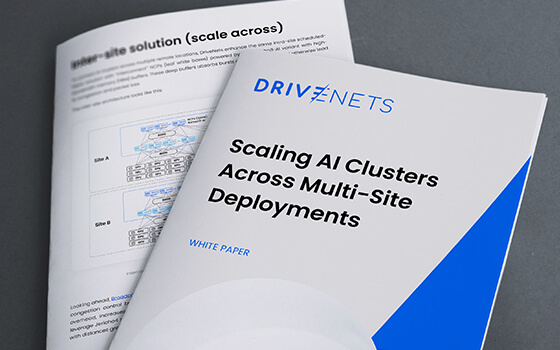
This paper outlines the networking challenges and key considerations for expanding AI clusters across geographically...
Read more
On-demand webinar where DriveNets and Semper Victus share cluster tuning best practices from Neocloud deployments.....
Read more
On-demand webinar where DriveNets and Semper Victus share cluster tuning best practices from Neocloud deployments.....
Read more
This paper explores the following four dimensions of network convergence as the basis of a...
Read more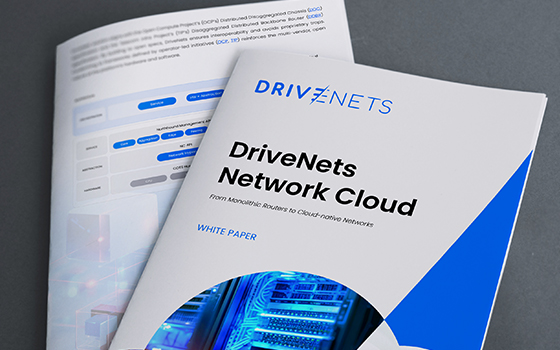
From monolithic router to cloud-native networking, this white paper explores how the Network Cloud platform...
Read more
On-demand webinar exploring how the NeoCloud WhiteFiber successfully deployed a large-scale AI cluster using DriveNets...
Read more
InsideHPC interviews DriveNets Head of AI Infrastructure, Yossi Kikozashvili, at ISC25 in Hamburg....
Read more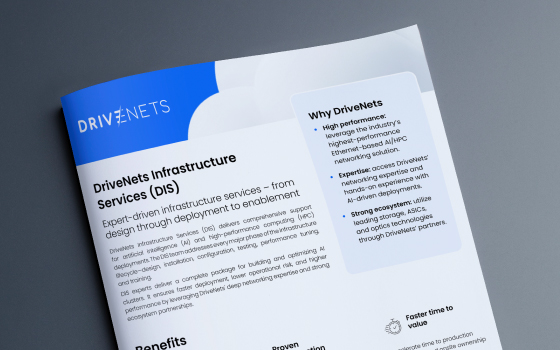
DriveNets Infrastructure Services (DIS) delivers comprehensive support for artificial intelligence (AI) and high-performance computing (HPC)...
Read more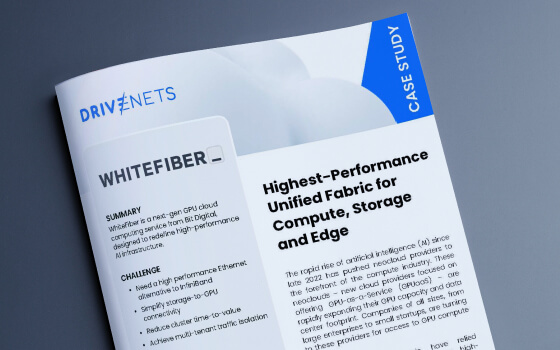
This case study explores WhiteFiber’s successful deployment of a large-scale AI cluster using DriveNets Network...
Read more
WhiteFiber CTO, Tom Sanfilippo, shares how DriveNets fabric scheduled Ethernet has allowed them to converge...
Read more
Futuriom highlights what’s next for Networking Infra for AI...
Read more
Neoclouds address a crucial gap in modern computing environments, where data-intensive applications require significant computational...
Read more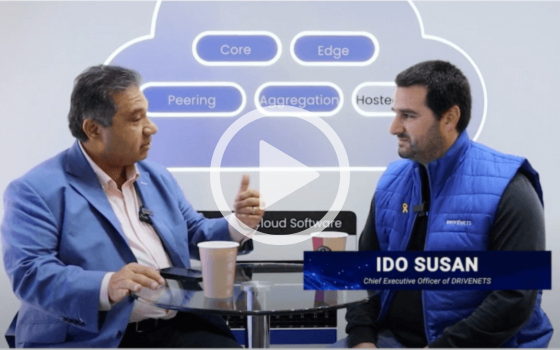
Zeus Kerravala of ZK Research interviews DriveNets CEO & Co-founder Ido Susan at MWC25 in...
Read more
DriveNets is enabling our service provider customers to modernize their network infrastructure - lowering both...
Read more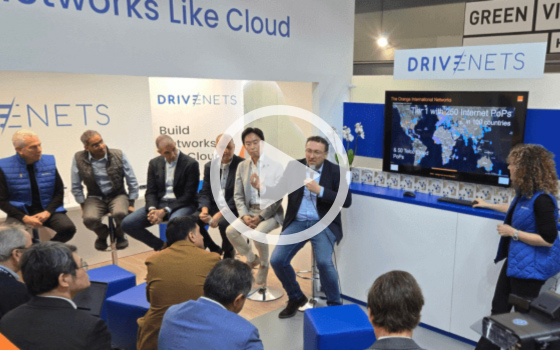
DriveNets is enabling our service provider customers to modernize their network infrastructure - lowering both...
Read more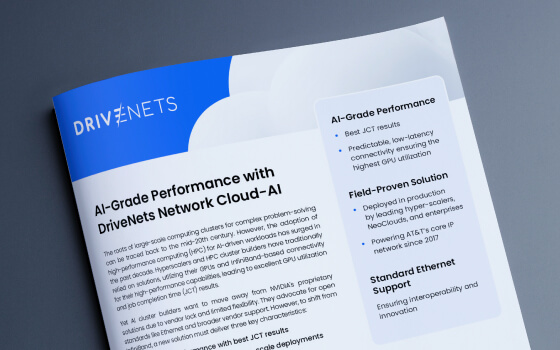
The DriveNets Network Cloud-AI solution delivers industry leading AI networking fabric performance at scale, supporting...
Read more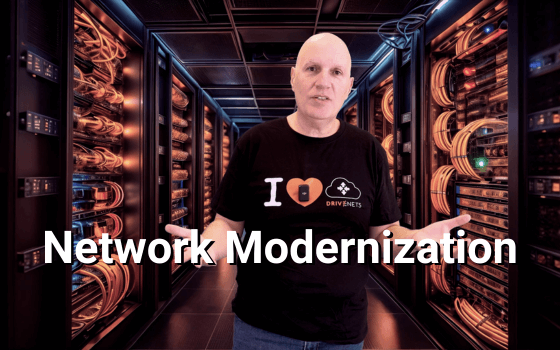
Service Providers cannot continue to build networks the same way they have for over 20...
Read more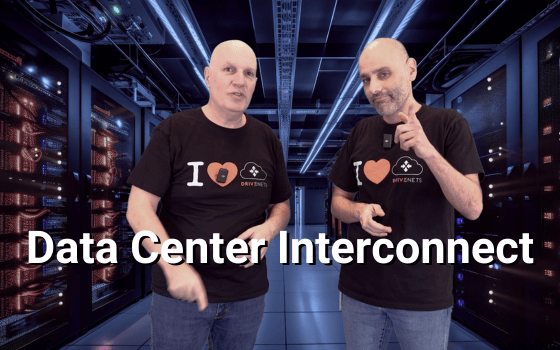
DCI is going through something and this something is called AI. The three changes that...
Read more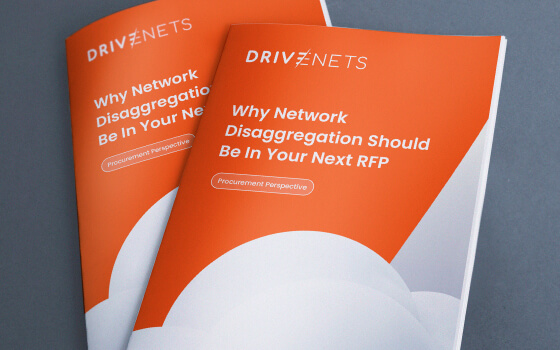
From a procurement and finance perspective, why should you include the new disaggregated network models...
Read more
What's the importance of latency in AI networks. AI networks introduce new challenges that need...
Read more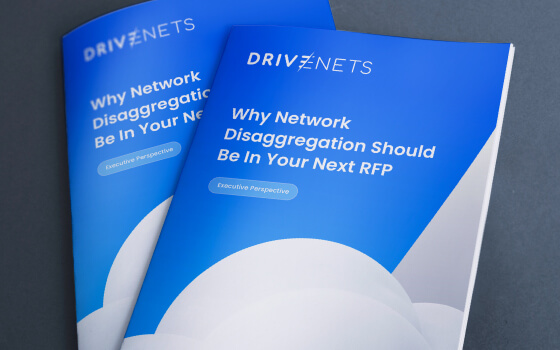
From an executive perspective, why should you include the new disaggregated network models in your...
Read more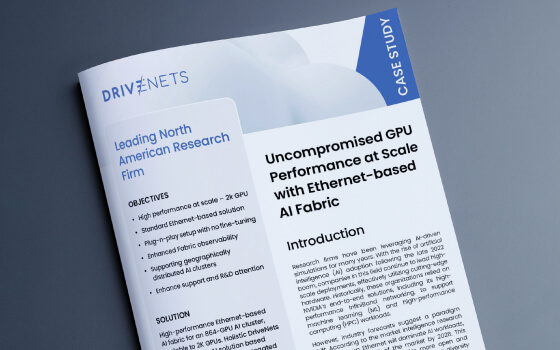
A leading North American research firm needed a cost-effective networking solution to support machine learning...
Read more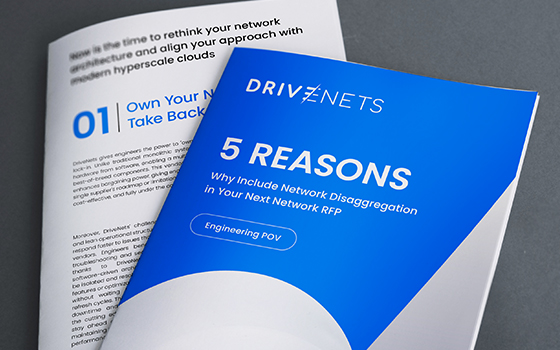
From an engineering perspective, why should you include the new disaggregated network models in your...
Read more
What's the difference between DDC, DES, and DSF? ...
Read more
Dudy Cohen, VP Product Marketing at DriveNets, explores how AI cluster fabrics pose unique challenges...
Read more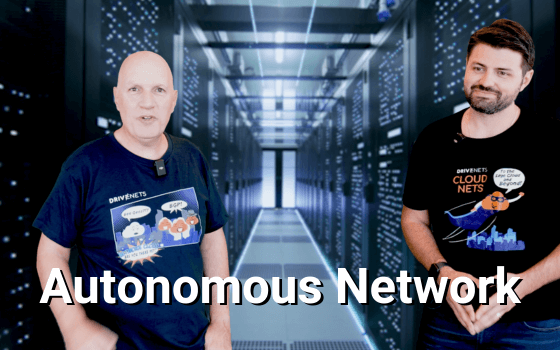
What do we envision when we talk about autonomous networks? ...
Read more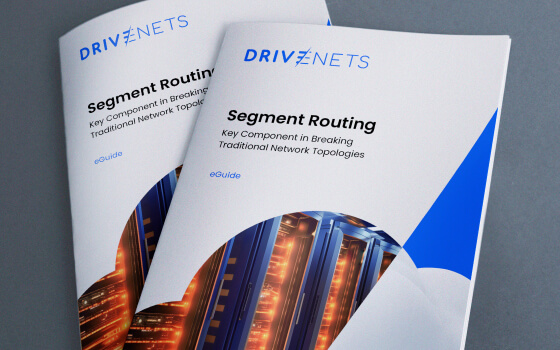
Service providers are turning to advanced traffic engineering techniques – such as segment routing....
Read more
Hillel Kobrinsky, co-founder and chief strategy officer for DriveNets, says cable ops are at the...
Read more
What are the different ways to implement AI fabric?...
Read more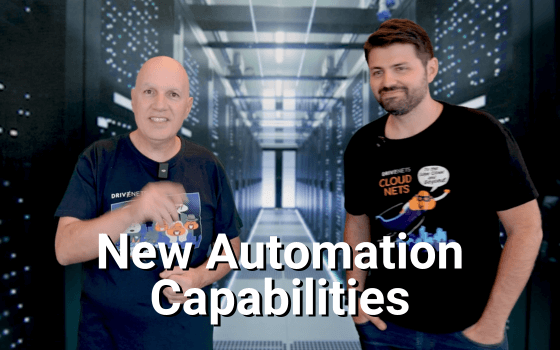
What new automation capabilities are coming to DNOR in 2024 that will make the life...
Read more
Zero-touch provisioning (ZTP) is an automated mechanism that allows new, unconfigured devices to be configured...
Read more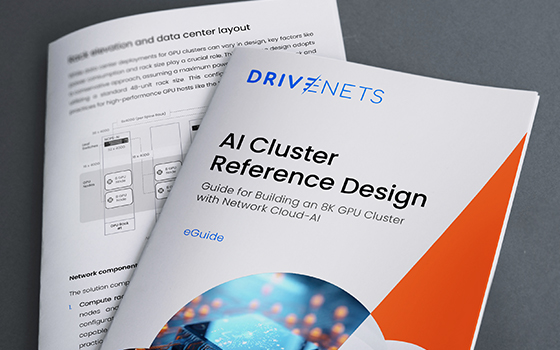
This guide describes the capabilities of DriveNets Network Cloud-AI and showcases a high-level reference design...
Read more
When building out a large-scale AI training clusters, the networking, and more specifically the cluster...
Read more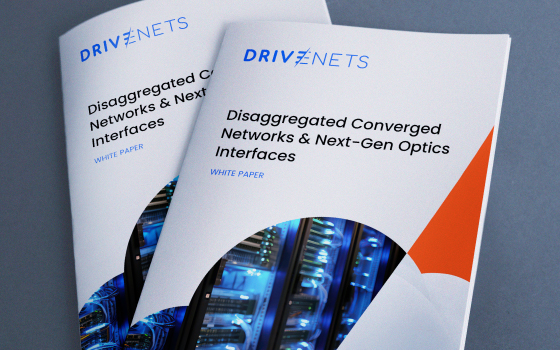
This paper explores how new optical interface standards can be part of this convergence and...
Read more
This paper explores how new optical interface standards can be part of this convergence and...
Read more
This datasheet covers the architecture and specifications for DriveNets Network Cloud...
Read more
To deploy an effective edge solution while ensuring flexibility, scalability, and reliability, especially for large-scale...
Read more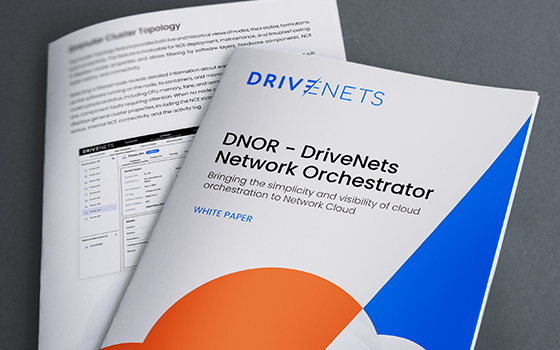
This white paper explores how DNOR 2.0 brings the simplicity and visibility of cloud orchestration...
Read more
Keynote: discover how DriveNets Network Cloud is revolutionizing the way service providers and hyperscalers build...
Read more
A network operating system (NOS) is a specialized software solution designed to manage and control...
Read more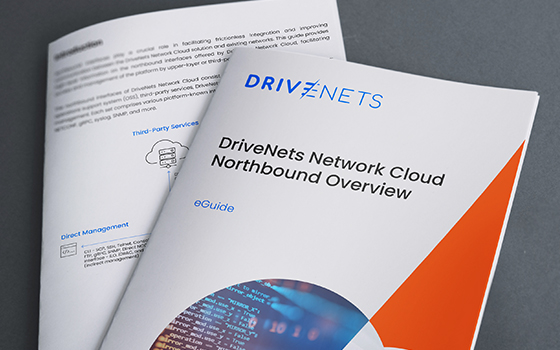
This guide provides high-level information on the northbound interfaces offered by DriveNets Network Cloud, facilitating...
Read more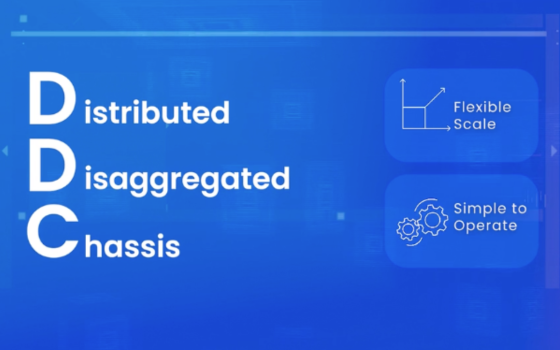
Distributed Disaggregated Chassis (DDC) is a new architecture for building flexible, high-scale networking systems –...
Read more
A core router is a high-capacity network router designed to forward traffic at the highest...
Read more
A large North American operator needed a cost-effective networking solution that could scale its core...
Read more
At OFC 2024, DriveNets' Calin Miculescu P.Eng demonstrates the future of networking,...
Read more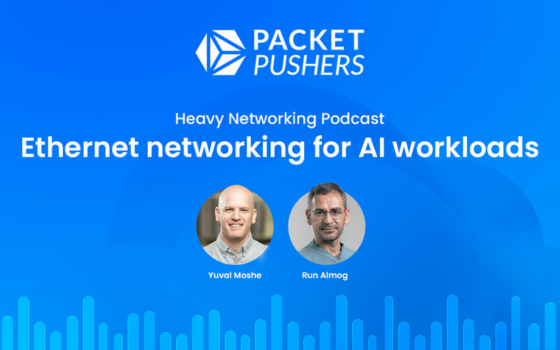
Heavy Networking discusses how DriveNets optimizes Ethernet for AI networking....
Read more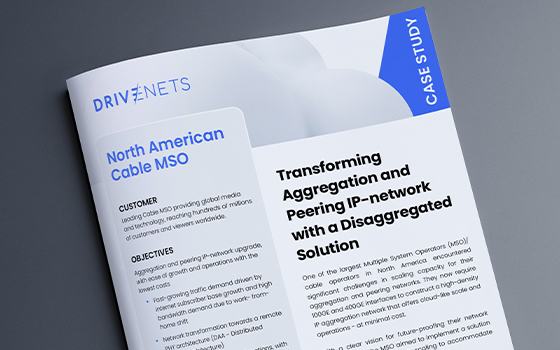
A large North American Multiple System Operators (MSO)/cable operator faced challenges in scaling capacity for...
Read more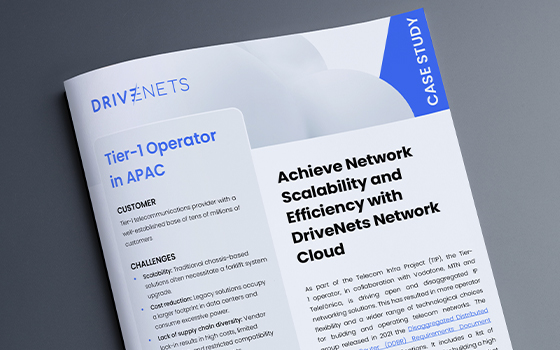
The tier-1 service provider wanted to increase its network capacity, agility and innovation by using...
Read more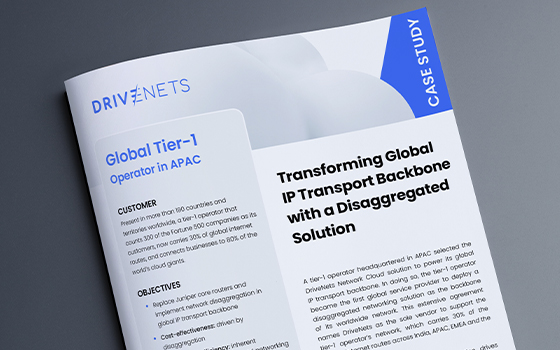
This deployment is further proof that telecom operators are embracing disaggregated networking and cloud architectures....
Read more
At MWC 2024, DriveNets founder and CEO Ido Susan and Chief Strategy Officer and co-founder...
Read more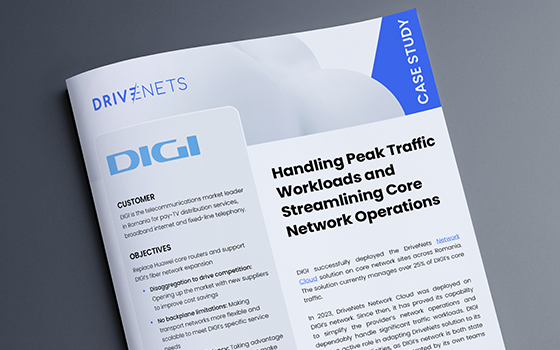
DIGI successfully deployed the DriveNets Network Cloud solution on core network sites across Romania. The...
Read more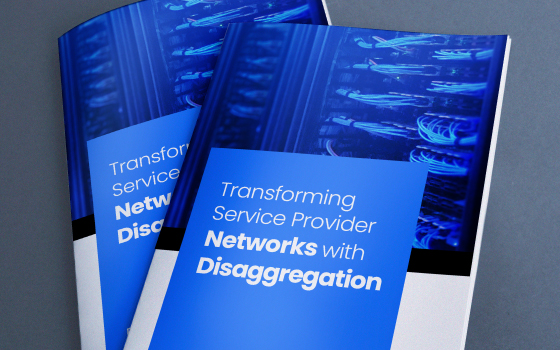
Distributed Disaggregated Chassis (DDC) represents a shift for service providers towards a more open and...
Read more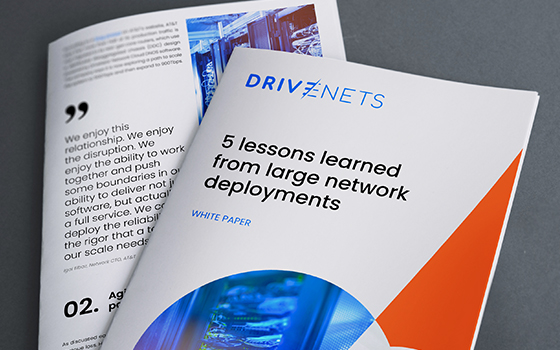
This white paper explores first hand lessons service providers have learned from large deployments of...
Read more
DCI is the process of linking multiple data centers together to achieve business or IT...
Read more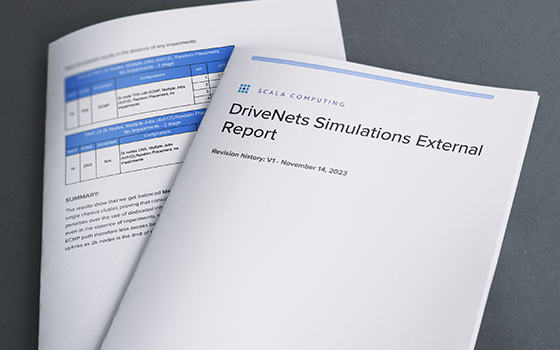
Independent testing by the leading scalable data center simulation lab Scala Computing validates that Network...
Read more
AI workloads are the “engine rooms” behind artificial intelligence algorithms. They usually describe AI services...
Read more
Why is cell-based fabric is so much better than the alternative when it comes to...
Read more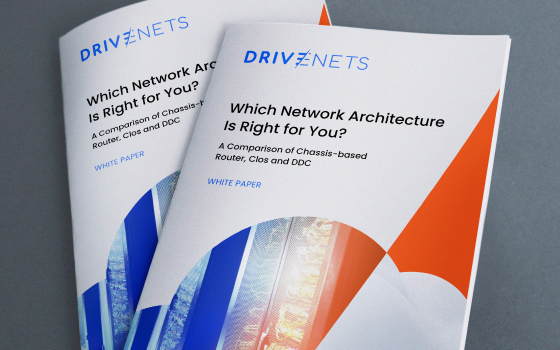
This white paper examines how service providers should evaluate next-generation architecture. There is a tendency...
Read more
At India Mobile Congress, DriveNets shared how we're applying disaggregation on the infrastructure....
Read more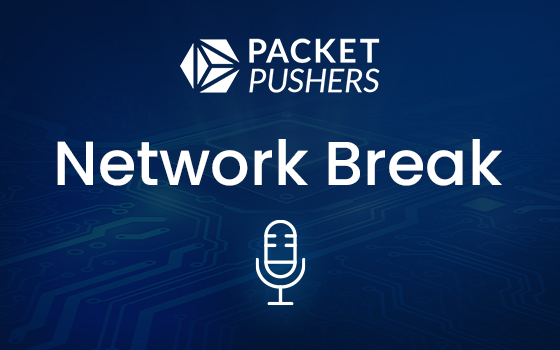
Network Break discusses DriveNets' white box offering for building an AI Ethernet fabric to support...
Read more
This white paper examines the options of flow-based, packet-based, and cell-based distribution solutions, offering some...
Read more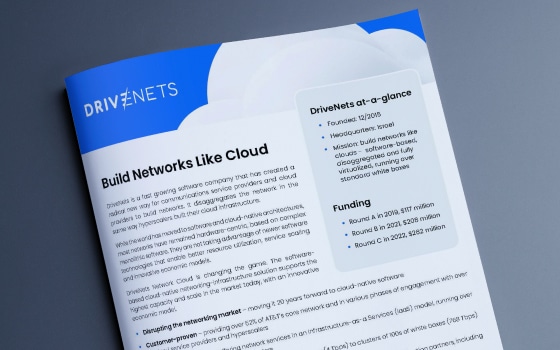
DriveNets Network Cloud is changing the game. The software-based networking solution supports the highest capacity...
Read more
Chassis and Clos, which is better? Looking at the alternative, Distributed Disaggregated Chassis (DDC),...
Read more
DriveNets Network Cloud-AI presents a unique and innovative architecture that offers the high performance and...
Read more
DriveNets Network Cloud allows service and cloud operators to build their network like clouds and...
Read more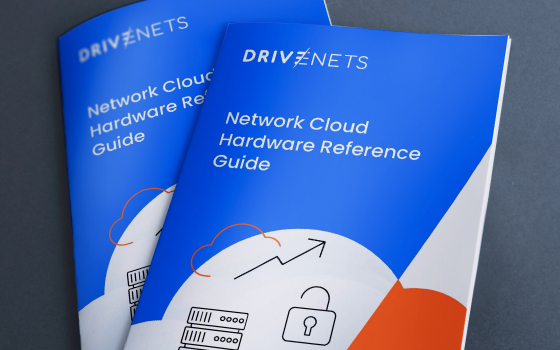
DriveNets software is designed to be hardware-agnostic, but it requires underlying hardware to conform to...
Read more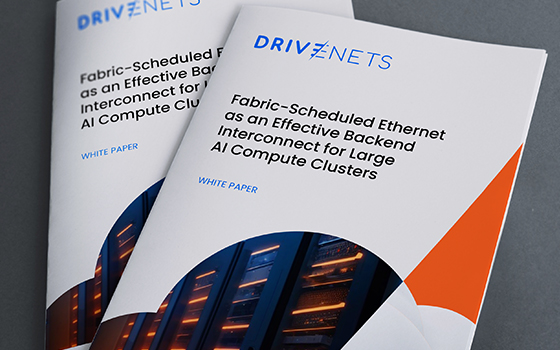
Fabric-Scheduled Ethernet guarantees lossless connectivity for a large-scale server array running high-bandwidth workloads free of...
Read more
Network orchestration is the centralized coordination of network elements and services that leverage software and...
Read more
The network edge is best explained as the outer shell of a network. It's the...
Read more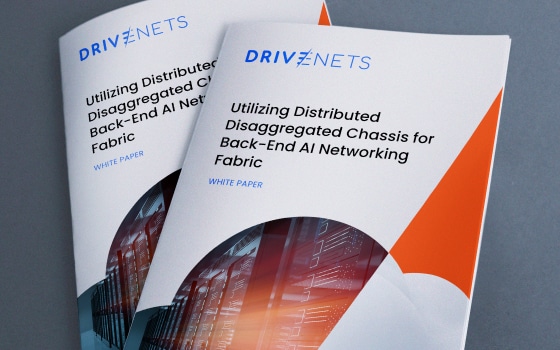
Utilizing Distributed Disaggregated Chassis (DDC) for Back-End AI Networking Fabric explores how the DDC-based solution...
Read more
Keynote: explore the Distributed Disaggregated Chassis (DDC), attracting attention across the network industry....
Read more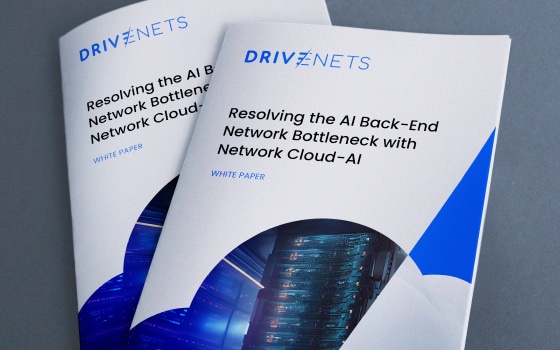
Maximizing the utilization of AI infrastructures and substantially lowering their costs, DriveNets Network Cloud-AI is...
Read more
A Distributed Disaggregated Chassis (DDC) is an innovative networking architecture for building large-scale routing systems...
Read more
A high-availability network is one that consistently operates at an optimal level, without manual intervention,...
Read more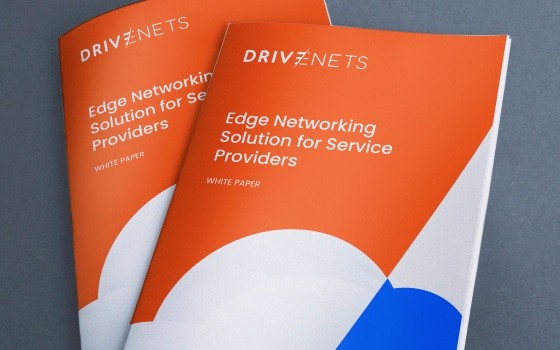
DriveNets Network Cloud overcomes challenges at the network edge by offering a simple, two-building-block architecture,...
Read more
We're talking about AI, and specifically about AI networking....
Read more
AI networking connects the large workloads created by AI processing via a high-capacity interconnect fabric....
Read more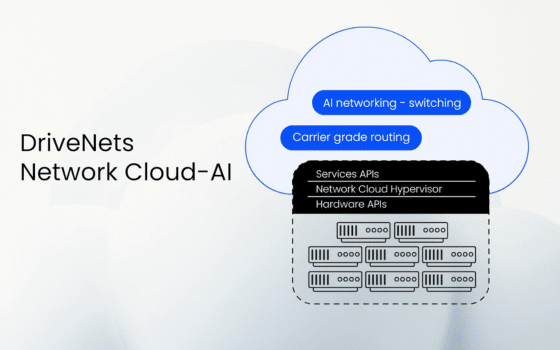
DriveNets Network Cloud-AI is the industry’s only solution capable of delivering the high performance of...
Read more
We're talking about some myths about disaggregated distributed chassis or Network Cloud....
Read more
Maximize ML performance! How is the industry addressing AI networking performance?...
Read more
AT&T, Orange, and Telefonica shared their progress on disaggregated networking at a panel for analysts...
Read more
Silverlinings Steve Saunders sat down with DriveNets' founders Ido Susan (CEO) and Hillel Kobrinsky (Chief...
Read more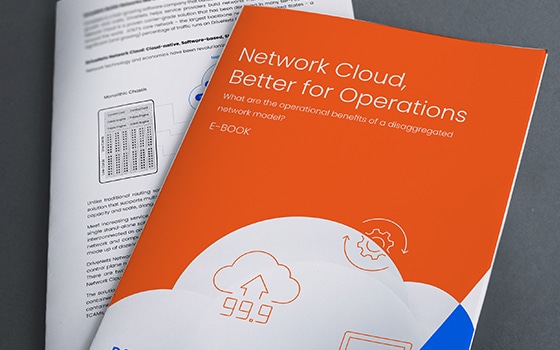
How can operations teams benefit from the superior network operations of DriveNets Network Cloud...
Read more
Disaggregation is delivering an array of operational advantages to the large cable operator....
Read more
DriveNets won this year's Leading Lights award by bringing together innovation, good people (employees, customers,...
Read more
Hillel Kobrinsky, chief strategy officer and co-founder of DriveNets, joined the podcast with an update...
Read more
The core network is the heart of a communication network, and ensures the efficient and...
Read more
Network infrastructure refers to the primary components that enable communication and data transfer between devices...
Read more
Network disaggregation is the separation of hardware and software components that carry out the main...
Read more
Network transformation is the process of thoroughly changing a company's network infrastructure to improve its...
Read more
Peering is a critical part of every service provider network. Peering, also referred to as...
Read more
The Cable Multiple Systems Operators (MSO) infrastructure serves as one of the main foundations for...
Read more
TelecomTV's Ray LeMaistre hosts a panel of experts from KDDI, DriveNets, Wipro and the Open...
Read more
CEO and Co-founder Ido Susan joins Matt Miller on Bloomberg Markets to discuss tech infrastructure. ...
Read more
Bloomberg podcast, The Tape, talks with Ido Susan, CEO and Co-Founder of DriveNets, about why...
Read more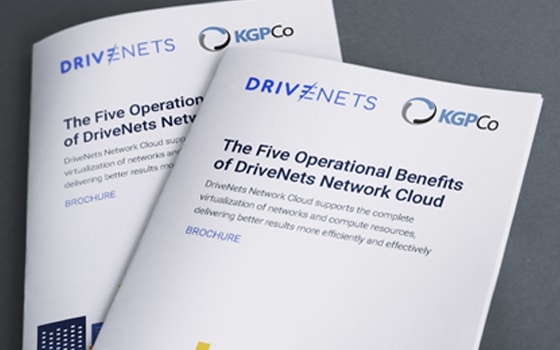
A disaggregated, cloud-native network infrastructure can be simpler, faster and more cost-effective to operate...
Read more
Heavy Networking talks with DriveNets about why it’s time to take the disaggregated model seriously....
Read more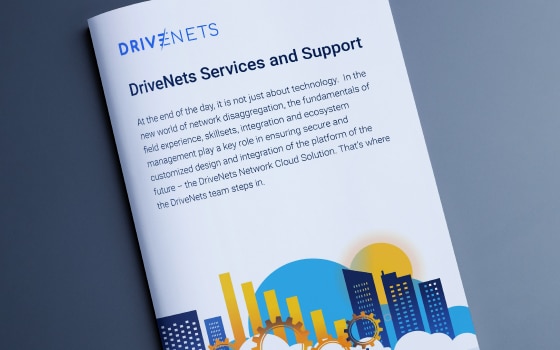
In the new world of network disaggregation, the fundamentals of field experience, skillsets, integration and...
Read more
Are you a network engineer or operation professional looking to develop your network cloud skills...
Read more
Video overview of DriveNets Network Orchestrator (DNOR), showing how it automates the deployment, scaling and...
Read more
Join us to hear our technology secrets behind the disaggregated approach....
Read more